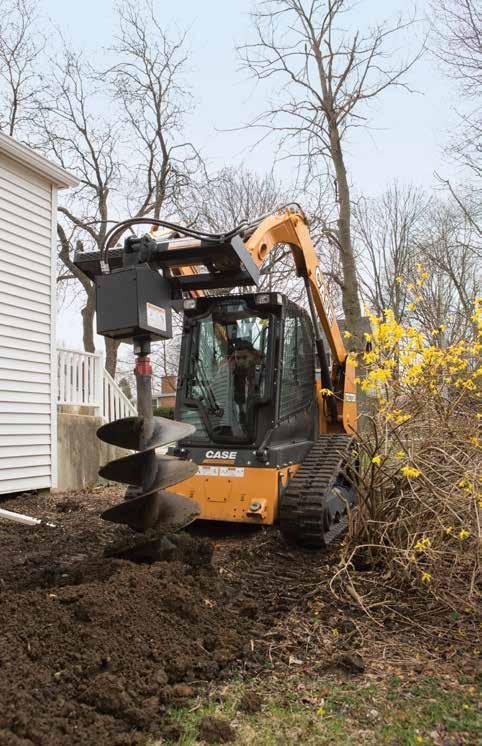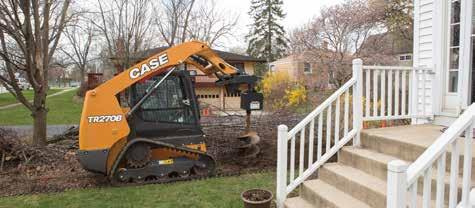
2 minute read
Understanding Skid Steer and CTL Attachment Options and Sizing for Fence Contractors
from Fence News June 2023
by fencenewsusa
Today’s skid steer loaders, compact track loaders (CTL) and attachments are more intelligent than ever before, providing exacting control of hydraulic flows for optimal performance and productivity.
According to Jerry Hutkowski, product marketing manager, CASE Construction Equipment, for fence installers and landscapers/facilities professionals charged with maintaining fence rows, this typically means that you can operate all primary skid steer and CTL attachments with small to mid-sized machines. “For instance, in the CASE product line, 74 horsepower machines with standard auxiliary hydraulic packages rated for 24.2 gallons per minute at 3,050 psi provide more than enough power to run attachments common in fence installation, such as post-hole pounders and augers,” he says. “Most of the brush mower/rotary cutter attachments used in fence line maintenance can also be operated with standard-flow attachments, although some deliver enhanced performance and are compatible with high-flow systems. Additional specialty attachments for this industry, such as chain-link fence dispensers, cement mixers and tilt adapters, also run effectively with standard hydraulics.”
Enhanced high-flow systems will generally be overkill for most practical work in these industries, adds Gustav Krejcha, product marketing manager –aftermarket attachments with CASE. “However, if large amounts of vegetation or small trees need to be removed, there are forestry mulchers available from CASE and other manufacturers that will require that increased capability.”
Krejcha offers some additional recommendations for equipment and attachments for fence professionals:
The Importance Of Attachment Setting Control
For many equipment operators, the gut instinct is to run the machine and attachments wide open. Often overlooked is that each attachment generally has an optimal operating range. This can be determined by readings in the operator’s manual or labels/inscriptions on the attachment itself.
Operating attachments outside of these parameters will lead to heartache and inefficiency – too little flow/pressure and the attachment won’t work to its best capabilities; too high flow/pressure will risk blowing hoses, putting undue strain on the attachment, and potentially make the attachment operate poorly.
When you look at today’s skid steers and CTLs – especially electrohydraulic models – the machines feature fine-tuning abilities to really run those attachments as they are intended. CASE machines with electrohydraulic controls feature a setting called “hydraulics on demand,” a feature that sets the percentage of hydraulic flow going to the attachment. This allows the operator to dial in hydraulic flow specifically to the demands of the attachment, their preference, or the job. And it really helps ensure that the attachment is working within the optimal parameters of its design.
Building A Fleet Strategy
Another important thing to think about as you are adding equipment and attachments to your fleet is your long-term growth and the needs of your business as a whole. Compact and sub-compact equipment, like stand-on mini track loaders and small articulated loaders, are becoming more widely available in the industry. There is the opportunity for attachment interchangeability, even across product lines. There are small articulated loaders that use the same coupler as skid steers and CTLs (universal skid steer coupler mounted), and there are mini track loaders with the same couplers as small articulated loaders (CII or common interface coupler). What size of properties/jobsites are you typically working? Do you have to travel through gates and doorways?
The best fleet strategy for fence installation contractors may be building a fleet that allows for attachment interchangeability across equipment types/ categories to allow for multiple crews to deploy with the right combination of equipment for each unique jobsite.
And when do you need to go bigger – to machines like large-frame CTLs with high-flow and enhanced high-flow hydraulics? “When you’re thinking of expanding your business into new areas such as land clearing and site development,” recommends Hutkowski. “Or if, as we mentioned earlier, there is a need to run forestry mulchers to make way for the work you’re doing.”
Learn more about CASE equipment and attachments at www.casece.com











